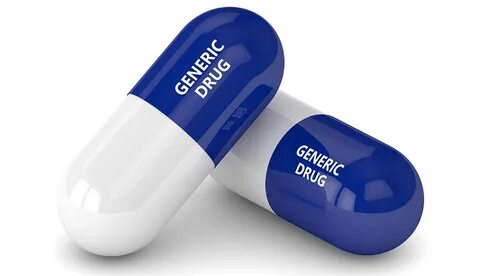Regenerative Medicine Market Estimated at USD 32.47 Billion in 2023 on Path to USD 153.71 Billion by 2030
The regenerative medicine market, valued at USD 32.47 billion in 2023 and projected to soar with a CAGR of 24.87% through 2030, is being propelled by the surge in chronic disease prevalence, rapid advancements in stem cell and gene therapies, an aging global population, and growing R&D investments.
Market Growth Drivers & Opportunity
Several powerful forces are fueling the regenerative medicine market:
-
Rising Burden of Chronic and Degenerative Diseases: Conditions like cardiovascular ailments, musculoskeletal disorders, and oncology represent rapidly expanding patient pools in need of regenerative solutions.
-
Technological Breakthroughs: Stem cell biology, biomaterials, gene therapy, 3D bioprinting, and artificial intelligence are converging to drive innovative therapies and cost efficiencies .
-
Favorable Regulatory Initiatives: The FDA’s RMAT designation and Europe’s ATMP framework have streamlined approval pathways, accelerating market access and incentivizing product development .
-
Public and Private Funding Momentum: Strong backing from institutions like NIH, along with university–industry partnerships, is bolstering innovation pipelines .
-
Market Opportunities: High unmet clinical needs in neurological disorders, wound healing, and organ repair are ripe areas for expansion.
Together, these drivers set the stage for an explosive market trajectory from USD 32.47 billion to an estimated USD 153.71 billion by 2030 , offering substantial upside for stakeholders.
Segmentation Analysis
The market breaks down across several dimensions, with notable sub-segments defining growth dynamics:
By Product:
The market is split between cell-based products—including applications like stem-cell therapies and platelet-rich plasma—and acellular products such as biomaterial scaffolds and tissue matrices.
By Therapy:
A leading share is held by cell therapy, driven by clinical trials and personalized medicine gains. Closely following is gene therapy, empowered by genomic breakthroughs. Tissue engineering and immunotherapy round out the therapeutic mix .
By Application:
-
Oncology dominates, buoyed by CAR-T and other cell therapies.
-
Musculoskeletal and dermatological uses are rapidly expanding to address joint repair, wound healing, and cosmetic treatments.
-
Cardiovascular, ophthalmology, and immunology/inflammation round out a broad clinical adoption portfolio .
By End-User:
Government and academic research institutes lead uptake, fueled by increased funding and clinical infrastructure. Medical centers and clinics follow, while industrial/commercial adoption is steadily rising .
Curious to peek inside? Grab your sample copy of this report now:https://www.maximizemarketresearch.com/request-sample/35229/
Country-Level Analysis
United States
The U.S. holds the majority share in North America, supported by strong infrastructure, active clinical pipelines, and industry–government R&D initiatives. NIH’s RMAT program and high chronic disease burden sustain momentum .
Germany
As the largest regenerative medicine market in Europe, Germany benefits from its robust biotech ecosystem, pan-European ATMP framework, and investments in cell and gene therapy research . Leading German firms like Bayer and Merck KGaA are also active.
China
China accounts for a major share of the Asia-Pacific market. Driven by government support, growing healthcare infrastructure, and increasing private investment, the country is poised for rapid commercialization of stem cell and gene therapies .
Japan
Japan’s advanced regulatory environment and aging population underpin its regenerative medicine strength. Government incentives and aging society protocols boost demand, especially in cell therapy and tissue engineering segments .
India
India is emerging as a key market in APAC, supported by improved healthcare infrastructure, growth in medical tourism, and increasing clinical research investments.
South Korea
South Korea emphasizes regenerative medicine via government-led biotech initiatives and fertility with a strong gene therapy clinical pipeline. Its technology-driven healthcare system facilitates integration of novel therapies.
Competitor Analysis
The report lists 25 major firms, including household names and specialized biotech players. Leading companies by market share and recent activity include:
-
Integra Lifesciences Corp. (US): Pioneer in surgical regenerative technologies and scaffolds; continues to expand through acquisitions and new product approvals.
-
Amgen Inc. (US): Deep pipeline in cell and gene therapies; last quarter announced a fresh Phase II study in CAR-T for hematologic cancer.
-
Pfizer Inc. (US): Recently forged a collaboration with a biotech startup to scale gene therapy production.
-
Bayer AG (Germany): Advanced clinical trials in cell-based regenerative treatments; investing heavily in Europe-based manufacturing capacity.
-
Astellas Pharma, Inc. (Japan): Engaged in late-stage trials for cell therapy in ophthalmologic disease.
Additional key companies:
-
ThermoGenesis Holdings (US): Expanded manufacturing scale via a new GMP cell processing facility.
-
Novartis AG (Switzerland): Extended its CAR-T therapy in Europe with updated label expansion in the UK.
-
F. Hoffmann‑La Roche Ltd. (Switzerland): Announced joint venture in gene delivery platform tech.
-
Merck KGaA (Germany): Opened a new bioprinting R&D center to explore 3D scaffold printing.
-
Vericel Corp. (US): Launched a next-gen muscle injury repair product pending RMAT review.
Recent Developments:
-
University–industry alliance: In December 2023, University of Toronto’s Medicine by Design and CCRM formed a biotech hub focused on regenerative tech .
-
India CAR‑T approval: ImmunoACT from IIT Bombay received CDSCO approval for CD19‑CAR‑T therapy for B‑cell cancers .
-
Corporate acquisition: In April 2022, Metcela acquired Japan Regenerative Medicine to bolster pediatric cardiac cell therapies .
These highlights illustrate a competitive landscape marked by strategic R&D, M&A activity, regulatory milestones, and production scale‑ups.
Conclusion
The regenerative medicine market stands on the threshold of transformative growth. With a powerful combination of scientific advancements, favorable regulations, and global expansion—supported by robust activity across North America, Europe, and Asia—it is set to evolve from a USD 32.5 billion niche into a USD 153.7 billion global force by 2030. Leading companies and emerging biotech players alike view this sector as fertile ground for innovation, collaboration, and investment. Stakeholders across healthcare delivery, manufacturing, and policy would be well-served to engage now, as the landscape transitions from experimental therapies to life‑altering medical realities.



